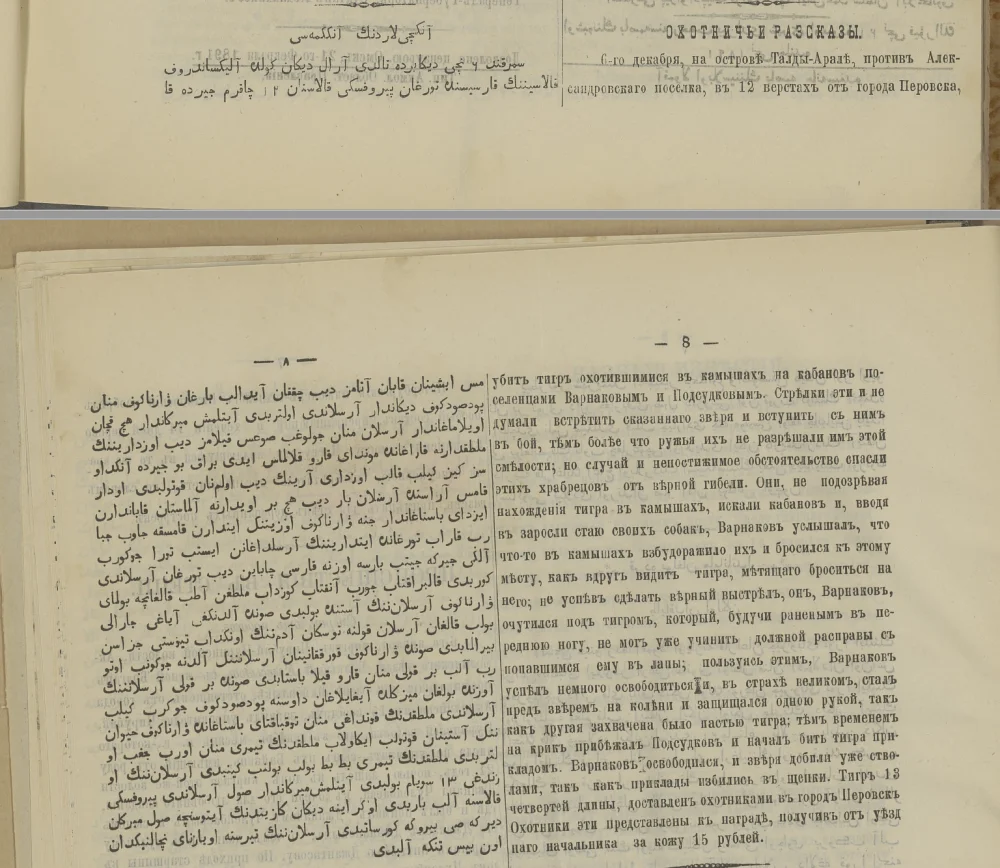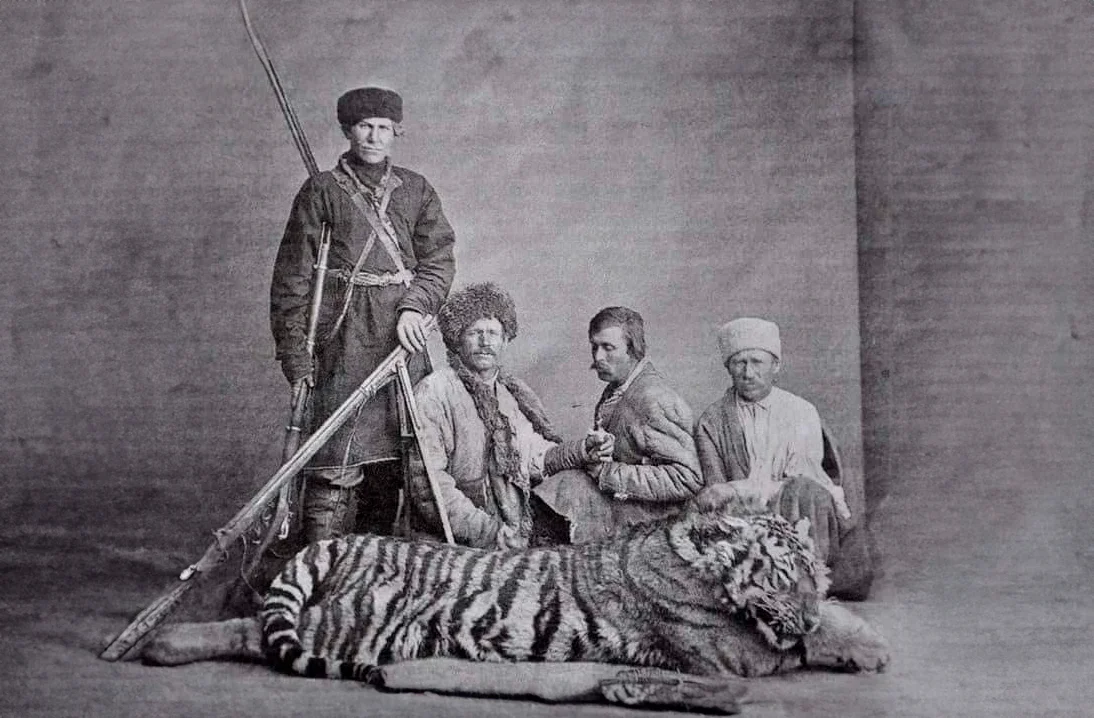As the nineteenth century gave way to the twentieth, a great wave of awakening surged through Kazakh intellectuals, sparking a passionate quest for knowledge. This outpouring of intellectual zeal led to an explosion of new magazines and newspapers being published in Kazakh, heralding the dawn of a new era in sharing culture. However, what these intellectuals wrote went beyond only spreading knowledge. Soon, a variety of publications emerged, covering topics like business, society, politics, art, and humor. Qalam invites you to explore snippets from Kazakh publishing culture and history compiled by historian Abai Myrzagali, offering a glimpse into the important issues of the past.
In September 2024, two tigers—one male and one female—were released into the wild in the Ile-Balkhash State Nature Reserve. They had been brought from the Netherlands in the hope of restoring the population of Turanian tigers in Kazakhstan, a species that had become extinct by the mid-twentieth century. This reintroduction was a significant conservation effort considering that exactly 133 years ago, a bounty of as much as 15 royal roubles was paid by the district treasury for the skin of a killed tiger. This story is discussed in the article ‘Hunting Stories’, published in Issue №8 of the Kirgizskaia Stepnaia Gazeta (in Kazakh, Dala Uälaiatynyñ Gazetі), a special supplement to the Akmolinsk Regional Gazette, in 1891. Interestingly, Taldyaral Island, where two hunters once killed a huge tiger, is known today as the ‘Forbidden Island’ or the ‘Island of the Rejected’ as it is home to the only functioning leprosarium in Kazakhstan and Central Asia. The story is told in this fashion:

№8 of the Kirgizskaia Stepnaia Gazeta
Hunting Stories
On 6 December, on Taldy-Aral Island, across the Alexandrovsky village, 12 verstsi
Unaware of the tiger's presence in the reeds, they were searching for wild boars and had driven a pack of their dogs into the thicket. Varnakov heard something agitating the dogs and rushed to the spot, only to find a tiger about to pounce on him. Before he could make an accurate shot, Varnakov found himself under the tiger. Fortunately, the tiger, having been wounded in the front leg, was unable to properly deal with the man in its clutches. Seizing the opportunity, Varnakov managed to free himself slightly and, in great fear, knelt before the beast, defending himself with one hand, as the other had been caught in the tiger’s jaws.
At that moment, Podsudkov arrived in response to his comrade's cries and began striking the tiger with the butt of his rifle. Varnakov broke free, and the tiger was finally killed by blows from the gun barrels as the rifle butts had been shattered into splinters. The tiger, 13 chetvertsi
The Kirgizskaia Stepnaia Gazeta (in Kazakh, Dala Uälaiatynyñ Gazetі) was a special supplement to the Akmolinsk (1888–1905), Semipalatinsk (1894–1905), and Semirechensk (1894–1901) regional gazettes. It was published in Omsk in Russian with additional content in Kazakh.




